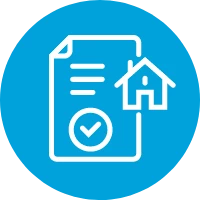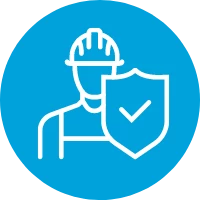Roof Damage Checklist: What to Look for After a Seattle Area Windstorm Content
Understand what impacts roof replacement and repair costs in the Seattle Area and how Elite Roofing helps you protect your investment with fair pricing and long-lasting results.
Seattle Area weather meets roofing reality
In the Seattle Area, steady rain and damp conditions are a way of life. Your roof works hard to keep your home dry and protected. With more than 25 years serving King, Pierce, and Snohomish counties, we have seen how moisture, moss, and temperature swings affect roofing materials and long-term performance.
If you are wondering how much a new roof or roof repair costs in the Seattle Area’s rainy climate, you are not alone. This guide explains the biggest cost drivers and how we help homeowners make smart, cost-effective choices that last.
Why roofing costs in the Seattle Area vary
- Roof size and pitch. Larger or steeper roofs require more materials, safety measures, and labor time.
- Roofing material. Asphalt, metal, cedar, and composite products all have different price points and lifespans.
- Access and complexity. Multiple angles, dormers, chimneys, and skylights add installation time.
- Tear off and disposal. Removing old or multiple layers increases labor and dump fees.
- Underlayment and decking repairs. Persistent rain can cause hidden wood rot that should be corrected before new shingles go on.
- Permits and codes. We handle permitting and inspections so the process stays smooth and compliant.
For homeowners comparing options, a full replacement can be the best long-term value. If you are exploring that route, see our detailed service page for roof replacement.
Average roofing costs in the Seattle Area
Every home is different, but the ranges below can help with planning for an average single family residence in the 1,800 to 2,400 square foot range.
| Roofing Type | Average Cost per sq ft | Average Total Cost | Expected Lifespan |
|---|---|---|---|
| Asphalt shingles | 5 to 7 dollars | 9,000 to 16,800 dollars | 20 to 30 years |
| Architectural shingles | 7 to 9 dollars | 12,600 to 20,000 dollars | 25 to 35 years |
| Metal roofing | 10 to 14 dollars | 18,000 to 33,000 dollars | 40 to 70 years |
| Cedar shake | 11 to 15 dollars | 20,000 to 36,000 dollars | 30 to 40 years |
| Composite roofing | 9 to 12 dollars | 16,000 to 26,000 dollars | 40 to 50 years |
The hidden costs of neglect
- Mold and mildew in attics and wall cavities
- Wood rot and structural weakening
- Damaged insulation, ceilings, and drywall
- Reduced home value and higher insurance risk
If you suspect damage, start with a professional checkup. You can book a roof inspection, and if you already have a known issue, our roof repairs team can help stabilize and fix the problem.
How we help keep your project affordable
- Clear estimates. We provide line items so you know exactly what you are paying for.
- Tailored recommendations. We match materials to your roof’s slope, your goals, and your budget.
- Efficient installation. Trained crews work quickly and safely to minimize disruption.
- Preventive maintenance. Regular roof cleaning and maintenance extends roof life and helps prevent costly repairs.
- Financing support. Ask about our 0% Down Financing OAC.
What to expect during your roofing project
- Comprehensive inspection. We evaluate your roof’s condition, ventilation, and structure and share photos with our assessment.
- Custom estimate and material selection. We explain your options from affordable asphalt to premium metal or composite systems so you can compare value and longevity.
- Tear off and preparation. We remove old roofing, repair damaged decking as needed, and install high performance underlayment for moisture protection.
- Installation. We install your new system to manufacturer specifications to protect warranties and performance.
- Final inspection and cleanup. We walk the job, magnet sweep the yard, and leave your property tidy.
Choosing the right material for the Seattle Area climate
- Architectural asphalt shingles. Reliable and budget friendly with many styles and colors.
- Metal roofing. Energy efficient, long lasting, and low maintenance. Learn more about metal roofing.
- Composite roofing. Mimics cedar or slate with strong warranties and excellent weather resistance.
- Cedar shake. Classic Pacific Northwest look, although it needs more maintenance than synthetic options.
Ready for a straight answer on roofing costs?
If you want real numbers for your home, we can assess your roof, explain your best options, and provide a clear written proposal. Schedule your free roofing estimate by clicking here; remember to ask about our 0% Down Financing (OAC).
Stay ahead of leaks this rainy season with Elite Roofing’s Rapid Response: Fall Roofing Inspection & Repair service, offering same-day inspections, emergency repairs, and a $199 “Ready for Rain” roof check to keep your home protected before the next storm hits.
Frequently Asked Roofing Installation Questions:
How soon after a Seattle windstorm should I have my roof inspected?
It’s a good idea to have your roof visually checked as soon as it’s safe to go outside, then schedule a professional inspection within a few days—especially if you notice missing shingles, debris on the roof, or gutter problems. In the Seattle area, follow-up rain usually arrives quickly, so catching damage early helps prevent leaks before they reach your ceilings and walls.
Should I go up on the roof myself to check for wind damage?
Climbing on the roof after a storm can be dangerous, especially if shingles are loose, the surface is wet, or there is hidden structural damage. It’s generally safer to do a ground-level check with binoculars and then call a professional roofing contractor for a full inspection. A trained roofer knows how to move safely on the roof, spot less obvious signs of wind damage, and recommend the right repair or replacement options.
What are the most common types of roof damage caused by windstorms in the Pacific Northwest?
High winds in the Seattle area frequently cause lifted or missing shingles, creased shingle tabs where the seal has broken, bent or loosened flashing around chimneys and skylights, clogged or pulled-away gutters, and impact damage from branches or debris. Some of this damage is subtle from the ground, which is why a professional roof inspection after a wind event is so important.
Will my homeowners insurance cover roof damage from a windstorm?
In many cases, homeowners insurance will cover sudden, storm-related damage—such as shingles torn off by high winds or roof damage from a fallen tree or large branch. Coverage details vary by policy, so it’s important to document visible damage with photos, note the date and time of the storm, and contact your insurance company to confirm your options. A written inspection report and estimate from a licensed roofing contractor can also support your claim.




